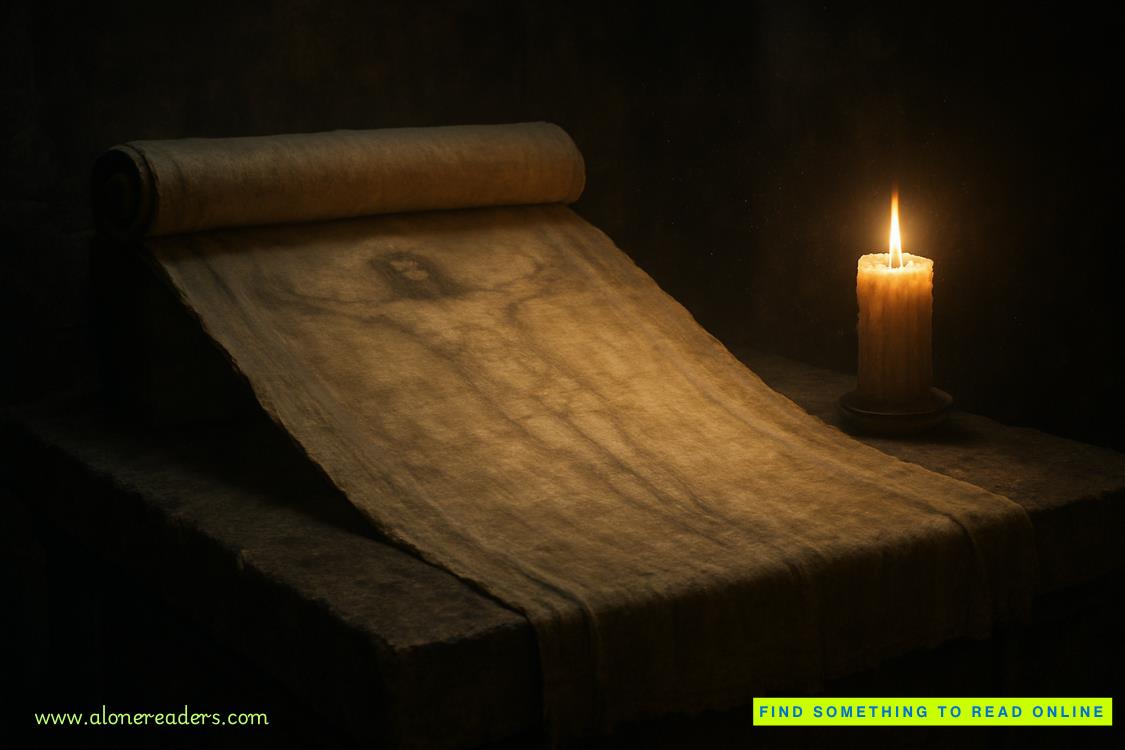Page 71 of Of Steel and Scale
She knew. The guilt that flashed across her features said her objection was perfunctory—a statement that had to be said but never meant. She reached for one of the scrolls sitting at the end of the table—there were three, two large and one much smaller—and unrolled it. It was a detailed map of Jakarra, one I’d not seen before. After putting a couple of cups on either end to stop it from curling up again, she pointed to the large, U-shaped mountain range that ran around the western edge of the island.
“This is the Karthling Mountains. This section here”—she pointed to the longer of the mountains’ two arms—“is the Helvede Range, and holds the network of caves any survivors would have retreated to.”
I leaned forward with a frown. “That looks dangerously close to the main port and Illistin. The gilded riders would have seen their retreat.”
“Yes, but between Illistin and the main cavern entrance lies a series of old, deep crevices that can only be crossed by bridges. They will have been destroyed in the retreat.”
I nodded. I remembered those bridges, and they’d scared the life out of me as a child. They were basically an arc of stone just wide enough for a wagon to pass over, and had nothing in the way of protective railings, which sometimes made crossing tricky with the fierce winds that often hit the island.
“Destroying the bridges won’t stop a flighted enemy.”
“No, but the nature of the mountain itself will. The entrances to the caves are hidden and narrow. Their birds won’t get in. That gives survivors a fighting chance.”
Not against a blood mage capable of moving rock, it didn’t. But I didn’t give voice to that thought. Mom would know that just as well much as me. “Where is the old aerie, then, if not in the Helvede arm of the mountains?”
She pointed to the leeward side of the shorter arm. “Here.”
“Meaning Kaia will have to drop me off and then retreat while I head in and look for survivors.” I scooped up more stew and munched on it contemplatively while I studied the map. I might have roamed through the forests and foothills of these mountains, but my overall knowledge of them wasn’t great. “Obviously it’d be too dangerous to dismount anywhere near Illistin, so where do you suggest?”
She pointed to the windward side of the mountain’s longer arm, near the point where it joined the trunk. “There’s a wide ledge underneath the summit’s peak here. There shouldn’t be too much snow up there at this time of year, but our winters sometime linger, and it can at times be deep, so ensure you’re wearing appropriate boots. There’s a series of caves midway between the ledge and the peak but you can’t miss the right one—it looks like a bent key. The others are shallow caves that aren’t part of the main system.”
“And once inside? How am I going to find the survivors without wandering through the tunnels for days?”
“With this.” She reached for the second scroll and unrolled it. It was a detailed drawing of a tunnel system.
I glanced at her. “Where in the wind’s name did this come from?”
“Esan’s archives. This is where you’ll enter.” She pointed to the left side of the map, then traced her finger along a series of tunnels until she reached a large, oval-shaped cavern. “You’ll likely find the bulk of survivors here. It was adapted long ago as a storm shelter, and provisions regularly rotated to keep them usable.”
“Meaning as long as they can keep our winged foe out of the system, they can survive for weeks or even months.”
“A month would be pushing it, but in theory, yes.”
I finished my stew and picked up the cup of shamoke. The southern exit was remote, and it was unlikely our gilded foe would or even could check every cavern entrance in that area to find our survivors—so why hadn’t the survivors made their way up to that peak and scribed us? Surely any well-provisioned storm shelter would have included a couple of scribe pens, even if they couldn’t be used within the mountain itself.
If they hadn’t attempted it, there would likely be only one reason—they had no one fit enough, uninjured enough, or familiar enough with the deeper tunnel system to do so. Mom would be well aware of all that, but I still had to ask, “Do you think they’ll have posted guards at the southern entrance?”
She hesitated. “Unlikely. They will be concentrating on protecting the main entrances, though I have no doubt watchers will be posted at the three tunnels leading into the shelter cavern.”
Her use of the term watchers rather than guards suggested she didn’t believe many of Jakarra’s fighting force had survived. It was logical that those whohadwould be posted to the more likely access points.
“Can I take this?” I had a fairly good memory for directions, but too much was at stake right now to make a mistake and go the wrong way.
“This one would be too cumbersome, but I drew up a smaller one and marked the right path.” She handed me the final scroll. “I have one more thing for you.”
She turned and walked across the room to the large alcove that held all her clothing. After a few minutes, she returned with a blackwood short bow and a quiver full of arrows.
Blackwood bows were rare here in Esan, as the trees really only grew well in the five islands, but they had a natural elasticity, a sweetness of draw, and a cast second to none, and those three things made bows crafted from them prized possessions. This was Mom’s bow—one she’d been gifted when she became bow master so long ago.
She placed them on the table next to me. “I want you to take these.”
“Mom, I have a bow?—”
“But you do not have a bow like this, nor do you have arrows as deadly as these.” She drew one free of the quiver and held it up. Even in the wan light filtering through the light wells overhead, the decidedly crude glass arrowhead gleamed with a deadly blue-white light.
“Ithican glass?” My gaze shot to hers. “How?”
“They are shards—waste, if you will. Jakarra imported them from Ithica for decades, using the larger flints for fishing spears and the smaller for arrowheads. If anything can penetrate the winged ones’ armor, it will be these.”















